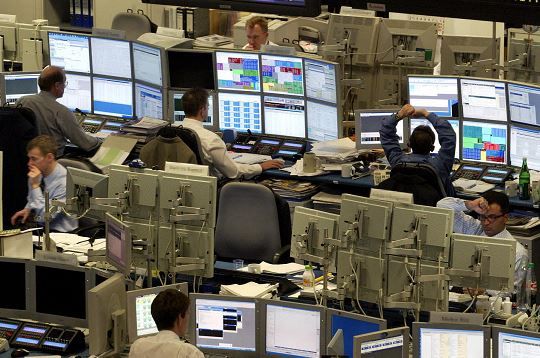US stocks managed to reverse their Tuesday losses, with another strong session yesterday, with the S&P500 coming within touching distance of its previous record closing high.
European stocks also enjoyed another decent session, as optimism over an apparent plateauing of infection rates, and optimism over a vaccine was also helping to improve sentiment, with investors choosing to set aside concerns about US, China relations and Washington DC political gridlock for now.
Today’s European session is likely to see a slightly softer open with today’s focus set to be on this afternoons US weekly jobless claims numbers.
The positive sentiment from yesterday continued to prevail despite a poor UK Q2 GDP number. This however was not unexpected given the poor readings seen in Europe and the US.
The more immediate focus was on the more positive data points that came out alongside the report, including solid expansions in manufacturing and construction activity, not only in the UK through May and June, but the EU as well.
While the overarching narrative was on how bad the UK’s Q2 GDP number was, there was less focus on why. It is certainly true that the UK Q2 GDP number was a bad one, but the UK certainly hasn’t been alone in that.
The main reason the UK Q2 drop was higher was due to the fact that the UK went into lockdown later than its European counterparts, on the 23rd March, and also came out later, which means that the total economic effect has been more concentrated in the context of the overall quarter. That hardly constitutes a basket case scenario in comparison to other countries, however that hasn’t stopped some people trying to do just that.
Since then the picture has improved somewhat, with a decent recovery in a lot of the June data, while the latest OECD composite leading indicator (CLI) for July showed the UK leading the pack in terms of the recovery, way out in front of the euro area.
No one is denying that the UK economy faces challenges in its recovery from the pandemic, and the ripple out effects are likely to last for months and years into the future, given the structural weaknesses in the UK economy predated the pandemic. All the pandemic has done is expose them in all of their brutal reality, along with every other country in Europe.
While stocks have by and large been moving higher, the recent bull run in gold markets has started to run out of steam, largely as a result of yields starting to edge up off their recent lows.
What appears to be driving this move higher in bond yields is not immediately clear. It could be optimism over the recovery story, or it could be concerns about inflation. Yesterday’s hotter than expected US CPI numbers for July following on from Tuesday’s firmer PPI readings would appear to suggest that price pressures are returning.
Whether this is a localised situation remains to be seen, but there does appear to be evidence supporting a narrative of rising prices, both in the UK and the US. Today’s German CPI numbers for July could well indicate if this is a more widespread phenomenon, though expectations would suggest not, given that expectations are for a sharp fall to -0.1% from 0.9%
We also have the latest weekly jobless claims numbers, which so far have pointed to a continuing recovery in the US labour market. There had been a concern that the sharp rise in coronavirus cases across the US in the last few weeks had the potential to see both jobless claims and continuing claims to start to edge higher again.
A couple of weeks ago this concern appeared to be validated when both initial claims and continuing claims popped higher. We then got last week’s surprise sharp fall to 1.18m, and the fall in continuing claims to 16.1m and their lowest levels since 10th April.
The big concern now is that given the expiry of the enhanced $600 a week unemployment benefits, combined with reversals in hiring in the wake of new lockdowns, is that these numbers could start to rise again. These fears are likely to increase further if US lawmakers can’t pass new legislation to cushion the effects of the July 31st $600 cliff edge, which to date they haven’t yet done.
Despite these concerns expectations are still for further declines in both the weekly rate, as well as the 4-week continuing claims numbers. Weekly claims are expected to fall to 1.12m, while continuing claims are estimated to fall below 16m to 15.89m, however this could just as easily go the other way, if there is a sudden pick up, post 31st July.
EURUSD – while below the 1.1830 area, the risk remains for a move lower. We need to push down through the 1.1720 to complete a move towards the 1.1680 area. A fall through here has the potential to target the 1.1580 area.
GBPUSD – the 1.3200 area remains key resistance, and while below the pound is vulnerable to a break below the 1.3000 area, with support also at 1.2980. A break below 1.2980 opens up the prospect of a move towards the 1.2770 area. Resistance remains at last week’s highs, just below 1.3200.
EURGBP – still finding support between the 0.8970/80 support area. While this holds the risk remains for a move rebound back to the 0.9080 area. Below the 0.8970/80 area opens the prospect of a move towards 0.8920.
USDJPY – starting to look better bid with the next resistance now up near the 107.20 area. Support comes in at the 106.20 area with major support below that at 105.20.






